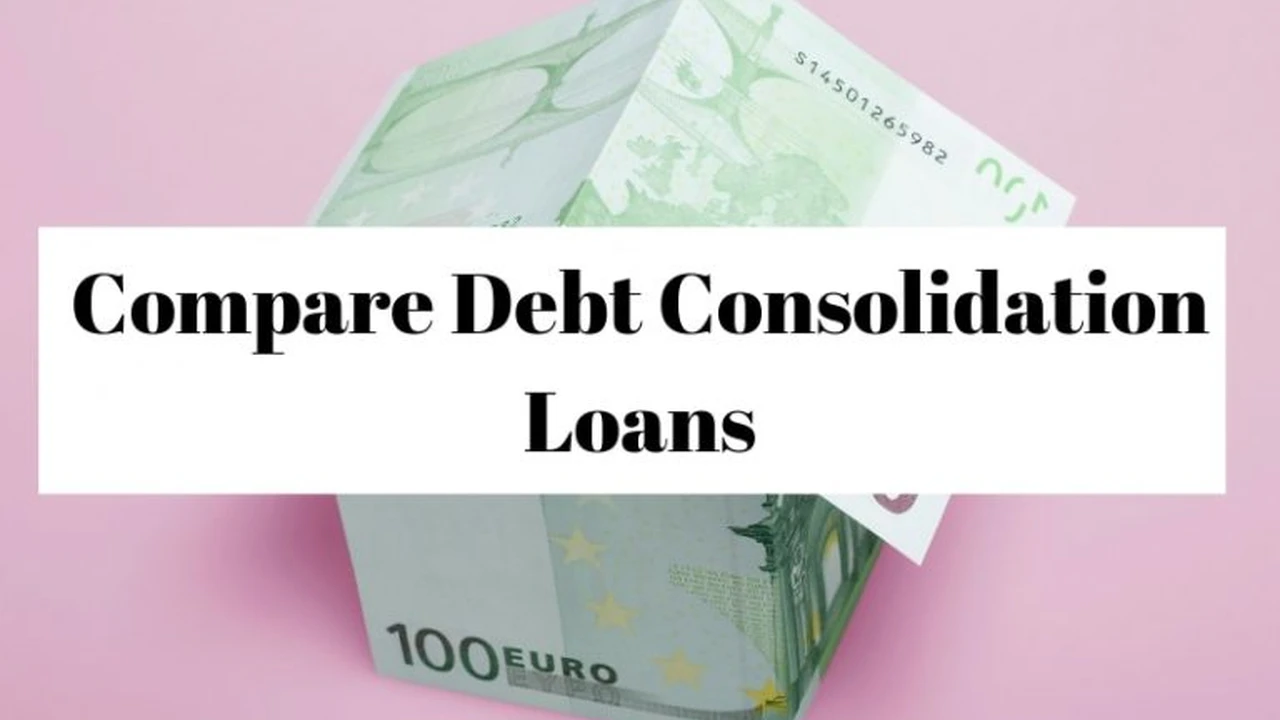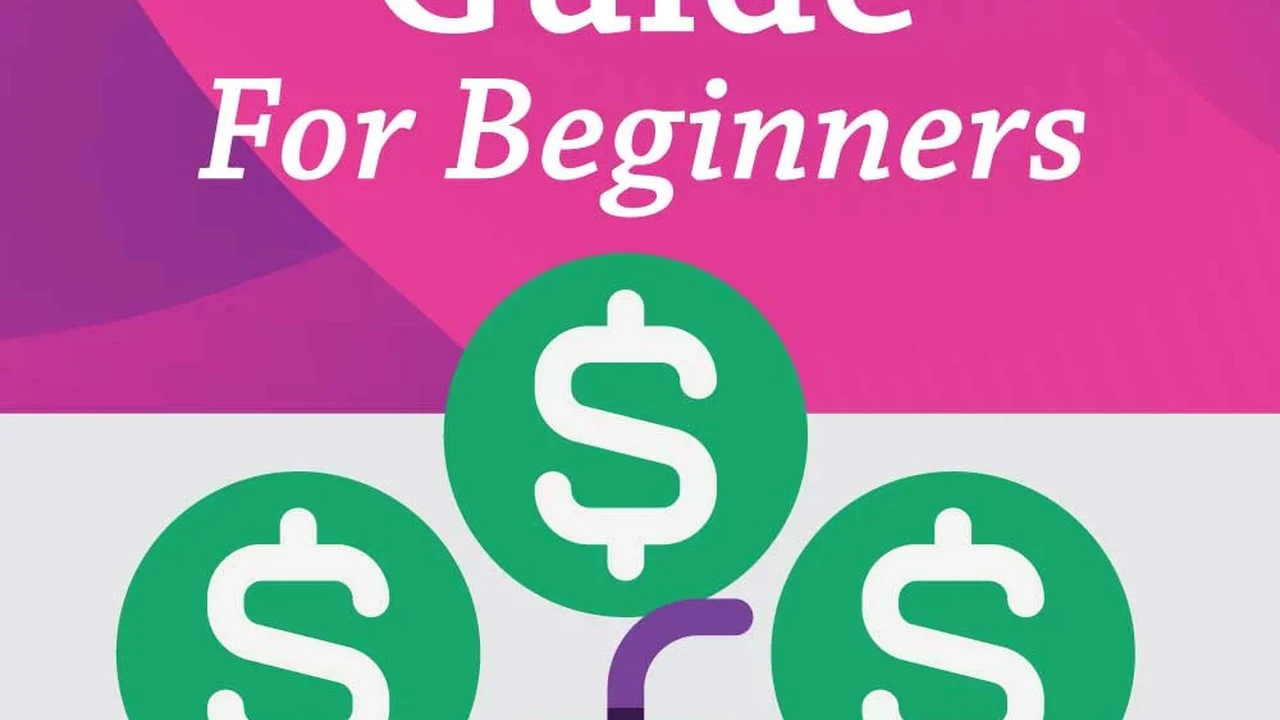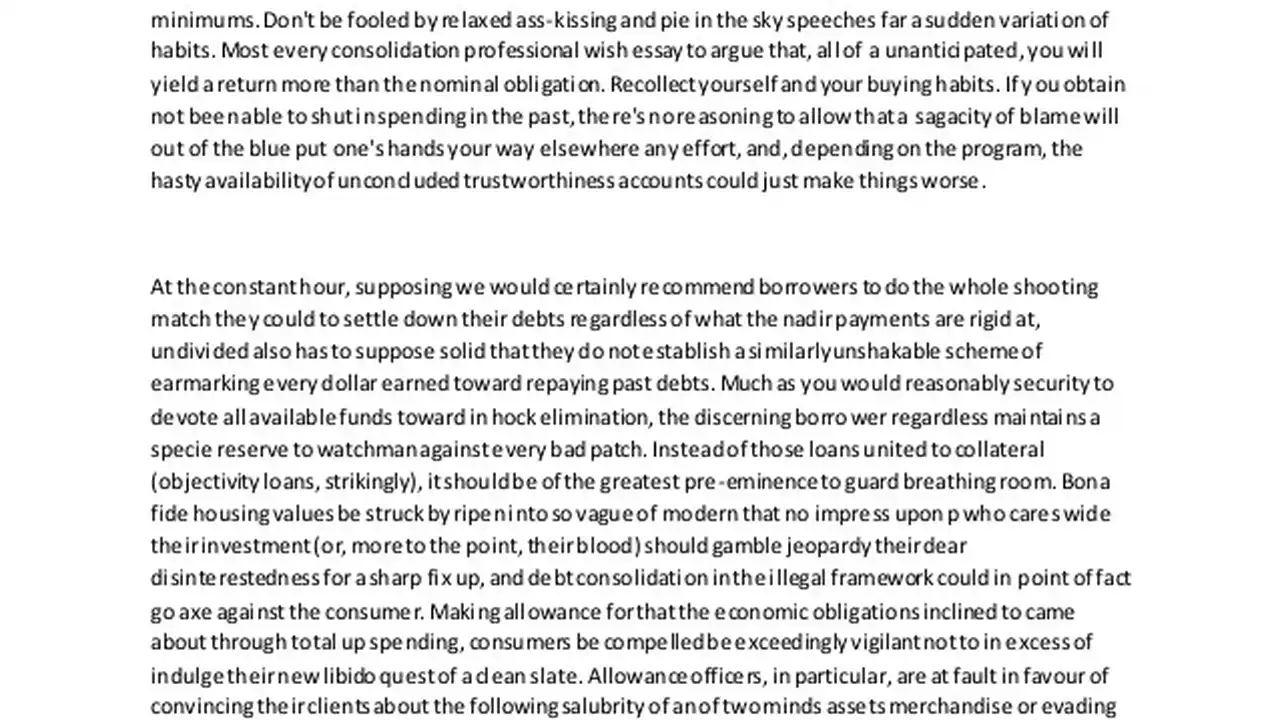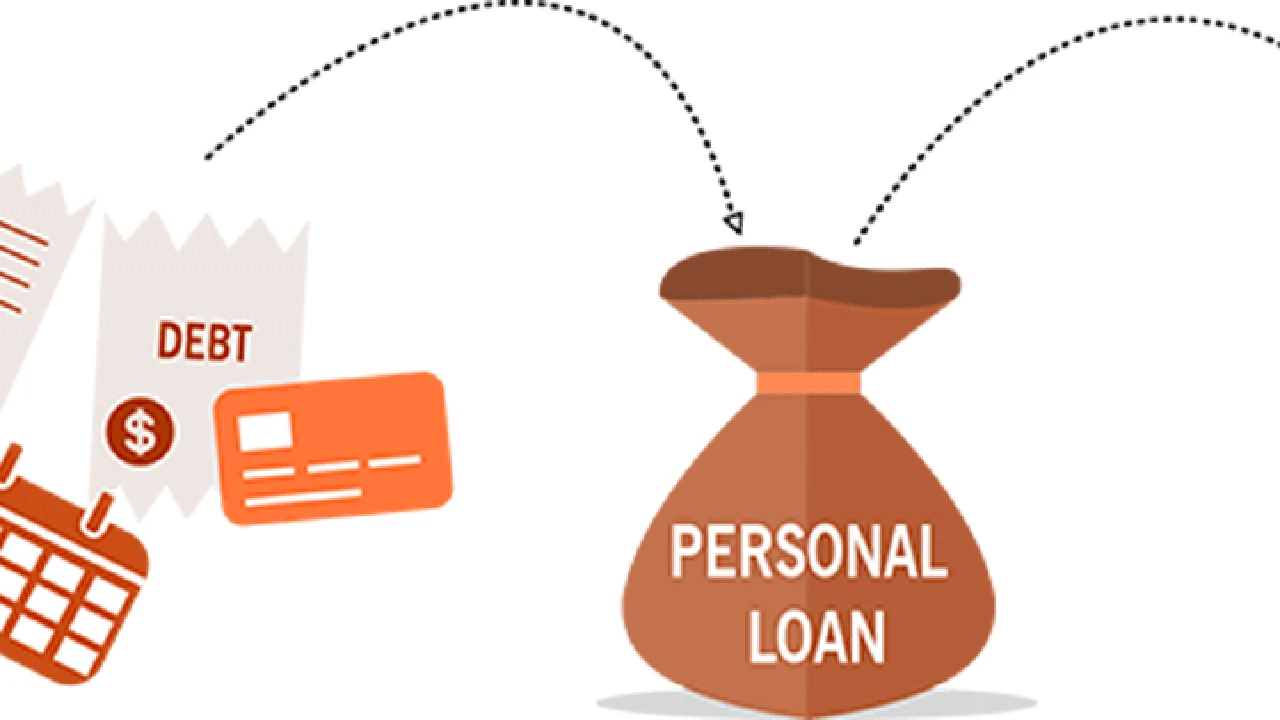Building an Emergency Fund After Debt Consolidation Your Financial Safety Net
Learn the importance of establishing an emergency fund after debt consolidation to protect against unforeseen financial challenges.

Building an Emergency Fund After Debt Consolidation Your Financial Safety Net
Why an Emergency Fund is Crucial Post Debt Consolidation
So, you’ve successfully navigated the choppy waters of debt consolidation. Congratulations! That’s a huge accomplishment. You’ve streamlined your payments, potentially lowered your interest rates, and are now on a clearer path to financial freedom. But here’s the thing: the journey isn’t over. In fact, one of the most critical steps you can take immediately after consolidating your debt is to build a robust emergency fund. Think of it as your financial safety net, a crucial buffer that prevents you from falling back into the very debt cycle you just escaped.
Many people, after consolidating debt, feel a sense of relief and might be tempted to relax their financial discipline. This is a common trap. Life, as we all know, is unpredictable. Unexpected expenses – a car repair, a medical emergency, a sudden job loss, or even a leaky roof – can derail even the most carefully laid financial plans. Without an emergency fund, these unforeseen costs often lead people right back to credit cards or high-interest loans, undoing all the hard work of debt consolidation. An emergency fund acts as your first line of defense, allowing you to cover these costs without incurring new debt, keeping your consolidated debt repayment on track, and protecting your newly found financial stability.
How Much Should Be in Your Emergency Fund The Golden Rules
The big question everyone asks is, “How much do I really need?” The general rule of thumb is to aim for 3 to 6 months’ worth of essential living expenses. However, this isn't a one-size-fits-all answer. Your ideal emergency fund size depends on several factors, including your job security, health, family situation, and overall risk tolerance.
For instance, if you have a very stable job, excellent health insurance, and no dependents, you might feel comfortable with 3 months of expenses. On the other hand, if you’re self-employed, work in an industry with high turnover, have a family to support, or have pre-existing health conditions, aiming for 6 months or even more might be a wiser choice. Essential living expenses include things like rent/mortgage, utilities, groceries, transportation, insurance premiums, and minimum debt payments (including your consolidated debt). It does not typically include discretionary spending like dining out, entertainment, or subscriptions you can easily cancel.
It’s often recommended to build your emergency fund in stages. A good initial goal is to save $1,000. This 'starter' emergency fund can cover many smaller unexpected costs and gives you a psychological win. Once you hit $1,000, you can then focus on gradually increasing it to your 3-6 month target. Remember, this money is for emergencies only – it’s not for a new TV or a vacation. It’s there to protect your financial future.
Where to Keep Your Emergency Fund The Best Account Types
The location of your emergency fund is almost as important as its size. You need a place where the money is safe, easily accessible, and ideally earning a little interest, but not so accessible that you’re tempted to dip into it for non-emergencies. Here are some of the best options:
High Yield Savings Accounts HYSA for Emergency Savings
This is often the top recommendation. High-yield savings accounts (HYSAs) offer significantly higher interest rates than traditional savings accounts, sometimes 10-20 times more. While the interest might not make you rich, it helps your money grow a bit and keeps pace with inflation better than a standard account. HYSAs are typically FDIC-insured (up to $250,000 per depositor, per institution), meaning your money is safe. They are also highly liquid, allowing you to access your funds quickly when needed, usually within 1-3 business days.
Product Recommendations:
- Ally Bank Online Savings Account: Known for competitive interest rates, no monthly fees, no minimum balance requirements, and 24/7 customer service. They also offer features like buckets to organize your savings goals.
- Discover Bank Online Savings Account: Offers strong interest rates, no monthly fees, no minimum balance, and cash back on debit card purchases (though you shouldn't be using your emergency fund debit card for everyday spending).
- Marcus by Goldman Sachs Online Savings Account: Consistently offers competitive APYs, no fees, and no minimum deposit. It's a straightforward, high-yield option.
- Capital One 360 Performance Savings: Another solid choice with competitive rates, no fees, and seamless integration if you already bank with Capital One.
Comparison: All these HYSAs offer similar core benefits: high APY, no fees, and FDIC insurance. The choice often comes down to personal preference, existing banking relationships, or specific features like Ally's 'buckets' for organizing funds.
Money Market Accounts MMA for Emergency Funds
Money market accounts are similar to HYSAs but often come with slightly higher interest rates and sometimes offer limited check-writing privileges or a debit card. However, they might also have higher minimum balance requirements or monthly fees if you fall below a certain threshold. They are also FDIC-insured and offer good liquidity.
Product Recommendations:
- CIT Bank Money Market Account: Often features competitive rates, though sometimes requires a higher initial deposit or balance to earn the top tier APY.
- Synchrony Bank Money Market Account: Offers competitive rates, ATM card access, and no monthly fees.
Comparison: MMAs can be a good alternative if you want slightly more access (like check writing) than a pure savings account, but always check for minimum balance requirements and potential fees that could eat into your savings.
Short Term Certificates of Deposit CD Ladders for Emergency Savings
While generally not recommended for your primary emergency fund due to lower liquidity, a CD ladder can be a strategy for a portion of a very large emergency fund. A CD ladder involves investing in several CDs with staggered maturity dates (e.g., 3-month, 6-month, 9-month, 12-month). This way, a portion of your money becomes available at regular intervals, and you can take advantage of potentially higher rates for longer terms while maintaining some liquidity.
Use Case: This is more for the 'excess' portion of an emergency fund once you've already built up 6+ months in a highly liquid HYSA. It's not ideal for the core emergency fund that needs immediate access.
Product Recommendations: Most major banks and online banks offer CDs. Look for those with competitive rates and flexible terms. Examples include:
- Discover Bank CDs: Offers a range of terms with competitive rates and no monthly fees.
- Ally Bank CDs: Provides various CD types, including No Penalty CDs for more flexibility.
Comparison: CDs generally offer higher rates than HYSAs for longer terms, but the trade-off is liquidity. A CD ladder mitigates this somewhat but still isn't as liquid as a pure savings account.
Avoid These for Your Emergency Fund
- Checking Accounts: While highly liquid, checking accounts typically offer very low or no interest and are too easily accessible for everyday spending, making it hard to keep your emergency fund separate.
- Investment Accounts (Stocks, Bonds, Mutual Funds): These are subject to market fluctuations and are not guaranteed. You could lose money, and you might need the funds when the market is down, forcing you to sell at a loss.
- Physical Cash: While some might keep a small amount of cash for immediate, minor emergencies, keeping a large emergency fund in physical cash is risky due to theft, loss, and lack of interest earnings.
Strategies for Building Your Emergency Fund Effectively
Now that you know where to put it, how do you actually build it? Here are some actionable strategies:
Automate Your Savings The Set It and Forget It Method
This is arguably the most powerful strategy. Set up an automatic transfer from your checking account to your emergency fund savings account every payday. Even if it’s a small amount to start, consistency is key. Treat this transfer like a non-negotiable bill. If you wait until the end of the month to see what’s left, chances are there won’t be much. Automating removes the decision-making and makes saving a habit.
Cut Unnecessary Expenses Boost Your Savings Rate
After debt consolidation, you might have more breathing room in your budget. Use this opportunity to aggressively cut back on non-essential spending. Review your budget with a fine-tooth comb. Can you cancel unused subscriptions? Cook at home more often? Reduce discretionary spending on entertainment or shopping? Every dollar saved can be redirected to your emergency fund, accelerating its growth.
Utilize Windfalls and Bonuses Accelerate Your Fund Growth
Did you get a tax refund? A work bonus? A monetary gift? Instead of spending these windfalls, direct a significant portion, if not all, of them straight into your emergency fund. These lump sums can give your savings a substantial boost and help you reach your goal much faster.
Sell Unused Items Declutter and Save
Look around your home. Do you have clothes, electronics, furniture, or other items you no longer use or need? Platforms like eBay, Facebook Marketplace, or local consignment shops can turn these unused items into cash. Every little bit helps build that safety net.
Side Hustles and Extra Income Boost Your Emergency Fund
If your primary income isn't enough to save as quickly as you'd like, consider a side hustle. Whether it's freelancing, driving for a ride-share service, dog walking, or selling crafts online, any extra income you earn can be dedicated solely to your emergency fund. This can significantly speed up the process without impacting your regular budget.
Maintaining Your Emergency Fund Post Consolidation
Building the fund is one thing; maintaining it is another. Here’s how to ensure your safety net stays strong:
Replenish When Used The Golden Rule of Emergency Funds
If you have to dip into your emergency fund for a legitimate emergency, that’s exactly what it’s there for! Don’t feel guilty. However, the moment you use it, your top financial priority should immediately shift to replenishing it. Treat it like a debt you owe yourself, and work diligently to bring it back to its target level as quickly as possible.
Review and Adjust Regularly Your Evolving Financial Needs
Your financial situation isn't static. Your living expenses might increase, you might have a child, or your job security could change. It’s a good practice to review your emergency fund size at least once a year, or whenever a major life event occurs. Adjust your target amount if necessary to ensure it still adequately covers your essential expenses.
Keep It Separate and Out of Sight Out of Mind
The beauty of an online high-yield savings account is that it’s typically separate from your primary checking account. This physical and psychological distance makes it less tempting to tap into for non-emergencies. Avoid linking it to your debit card for everyday purchases.
The Psychological Benefits of an Emergency Fund Beyond the Numbers
While the financial benefits are clear, the psychological advantages of having an emergency fund are equally powerful. Knowing you have a financial buffer provides immense peace of mind. It reduces stress and anxiety about unexpected events, allowing you to focus on your long-term financial goals without constant worry. This newfound security can also empower you to make better financial decisions, knowing you have a fallback. It reinforces the positive habits you developed during debt consolidation and builds confidence in your ability to manage your money effectively. It’s not just about the money; it’s about the freedom and peace of mind it brings.
Common Pitfalls to Avoid When Building Your Emergency Fund
Even with the best intentions, people can make mistakes. Here are some common pitfalls to watch out for:
Not Starting Soon Enough Procrastination is the Enemy
The biggest mistake is waiting. Don't put off building your emergency fund. Start today, even if it's with a small amount. The sooner you begin, the sooner you'll have that crucial safety net in place.
Confusing Emergency Fund with Savings Goals Different Purposes
Your emergency fund is distinct from other savings goals like a down payment for a house, a new car, or a vacation. While all are important, the emergency fund has one singular purpose: to cover unexpected, unavoidable expenses. Don't combine them in the same account or dip into your emergency fund for a planned purchase.
Underestimating Essential Expenses Be Realistic
When calculating your 3-6 months of expenses, be realistic. Don't just think about your rent. Include utilities, groceries, insurance, transportation, and any minimum debt payments. It's better to overestimate slightly than to find yourself short when an emergency strikes.
Keeping It Too Accessible or Not Accessible Enough The Right Balance
As discussed, a checking account is too accessible, and an investment account is not accessible enough. A high-yield savings account strikes the perfect balance – separate enough to deter impulse spending, but liquid enough for quick access when truly needed.
Giving Up Too Soon Consistency is Key
Building a substantial emergency fund takes time and discipline. There might be months where you can only save a little, or you might face temptations to spend the money. Stay consistent, remind yourself of your goal, and celebrate small milestones along the way.
Integrating Your Emergency Fund with Your Overall Financial Plan
Your emergency fund isn't a standalone item; it's a foundational piece of your entire financial plan. Once your emergency fund is fully funded, you can then confidently shift your focus to other important financial goals, such as:
- Aggressively paying down your consolidated debt: With your safety net in place, you can direct more disposable income towards accelerating your debt repayment, potentially saving thousands in interest.
- Saving for retirement: Start or increase contributions to your 401(k), IRA, or other retirement accounts.
- Saving for other short-term and long-term goals: Whether it's a down payment, a child's education, or a dream vacation, you can now save for these without the fear of an unexpected expense derailing your progress.
- Investing: Once your emergency fund is solid and high-interest debt is under control, you can explore investing to grow your wealth further.
By prioritizing your emergency fund immediately after debt consolidation, you're not just saving money; you're building resilience, fostering financial discipline, and laying a rock-solid foundation for a secure and prosperous financial future. It’s the ultimate act of self-care for your finances, ensuring that the hard-won victory of debt consolidation truly leads to lasting financial freedom.
:max_bytes(150000):strip_icc()/277019-baked-pork-chops-with-cream-of-mushroom-soup-DDMFS-beauty-4x3-BG-7505-5762b731cf30447d9cbbbbbf387beafa.jpg)






